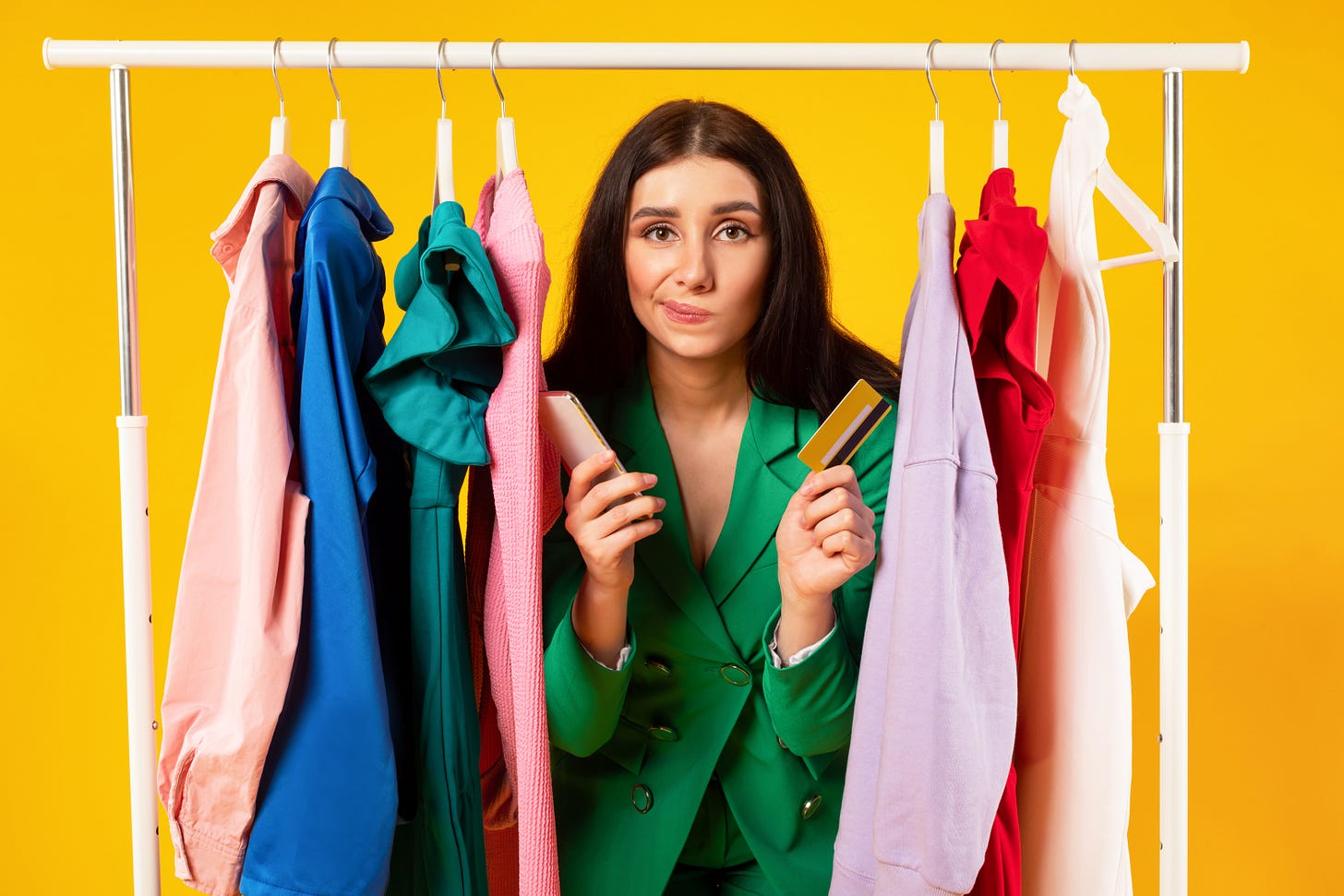Women who were born in the 1930’s have described for me how they would “dress up” to go into town or pay the electric bill or even to buy groceries. “Dressing up” in this context didn’t always mean putting on a literal dress, wearing heels, and carrying a color-coordinated purse (though for some it did!), but it was at least a “step up” from what they were wearing around the house.
I was born in 1966, so these women are my parents’ age, but even in my lifetime I remember my mother never going out without putting on an outfit that was clean, pressed, and (usually) fancier than it needed to be in order to complete her scheduled task(s).
But my mom didn’t stop there. My mom dressed neatly at home, even when no one except her family would see her. For many years after my father died, it was just my mom and me living in her house and my mom continued her tradition of getting up, putting on a pot of coffee, and dressing “appropriately” for her day.
Men of that era did a similar thing when they dressed for work. Some had uniforms, but plenty of men had to make choices about what they would wear for work. Many of these choices were more subconscious than conscious because of social norms within each profession. In other words, both men and women had a sense of what was “appropriate” for them to wear.
As a teenager, even I faced societal norms about what I should and should not wear to school. Only “poor” kids wore ratty jeans or dirty clothes. “Nice” girls didn’t wear short skirts and “bad” boys wore leather jackets. I was excited when I got my first pair of Lee jeans because it was the first pair of pants I owned that wasn’t either homemade or a hand-me-down. Suddenly, I was like one of the “cool” kids!
It’s funny to think of these stereotypes now, but I’m bringing up these stories, not to focus on the specifics of each one, but to understand how we make the types of decisions we do regarding our clothing. Most importantly, in the context of happiness, there is an opportunity for our clothing choices to make us either happier or more unhappy.
Have you ever thought about your clothes from a happiness perspective? When you look in your closet, do you smile or frown at the choices? Do you enjoy choosing something to wear or do you dread it?
I love clothes, so I think about my clothing choices often. Even during the Covid years, when most folks lived in their pajamas or sweat pants, I thought consciously about what I would wear and why. I made sure my clothes matched even if only my cat and I would see them.
When I was an adult working in the corporate world, I made some very conscious clothing choices. I intuitively practiced what I would later learn from a book: to dress for the job you want, not the one you have. I can’t say how much my clothing choices worked for me, but I was promoted to manager status without having asked for the job and I think my professional dress had at least a small hand in that.
In the 1990’s and early 2000’s, I tended to wear black or dark-colored suits to work because that was what I saw most people wearing. I enjoyed shopping, though, and I admired suits of other colors when I saw them in the stores. At some point, something in me “snapped” and I decided that I was going to begin wearing more colorful clothing. I guess I already knew deep down that I wasn’t totally pleased with my choices, but I felt constrained by what I thought were the norms of my workplace.
While carefully staying within the written and unwritten rules of my job and company, I bought several suits of non-standard colors, like green, beige, and even light yellow. I even threw out all of my black briefcases and bought a stylish burgundy one. I had some truly beautiful (to me) outfits during that time of my career and they made me feel like the smartest person in the room sometimes.1
When I noticed how my mood changed when I changed my wardrobe, I realized that clothing isn’t just for covering up our bodies so we don’t get arrested for indecent exposure. Clothing can also contribute to our happiness.
Clothing can add to or take away from our happiness.
In contrast to me, I have a friend who does not find joy in choosing what to wear each day. At some point, he decided to simplify his life by not having to make this decision anymore. He literally wears the same outfit every day. He settled on black pants and a red T-shirt. He bought enough shirts and pants so he can wear a fresh outfit every day and only have to do laundry every week or so. His clothing choices bring him joy because he doesn’t have to think about it.2
My friend may seem like an extreme case, but I’ve met other people who have told me that they actually prefer wearing uniforms because they don’t have to think about what they wear to work. Private schools often require uniforms to mitigate some of the difficulties that surround “appropriate” dress and dealing with the formation of cliques that can cause stress for students.
When we’re examining clothing from a happiness standpoint, what is critical to note is that what brings joy to one person can be a source of stress to another. If I was forced to wear a red shirt with black pants every day, I would feel like I was in prison! But, for some, having a “uniform” — especially if it’s of their own choosing — can be a great source of comfort or joy.3
Most of us fall somewhere in the middle of these two extremes. In fact, even my friend and I don’t strictly follow these edicts we’ve created for ourselves. My friend, for example, does own a suit and he has worn it on occasions that are meaningful to him. I don’t wear an “outfit” every day and I’ve been known to wear the same pair of pants more than one day in a row.4
When we’re considering how to integrate more happiness into our lives, even the most seemingly insignificant elements of life can be relevant. You may not give much thought to what you wear each day, but maybe you should?
For the next week or so, be intentional about what you wear. Maybe you even want to keep a clothing journal, to record how you feel when you’re wearing a particular shirt, pants, or outfit? If you notice a pattern (e.g., “orange makes me feel vibrant, but gray makes me feel lethargic”), take note of it so you can make more mindful choices.
For those who may never have thought about it before, it’s not just the style and color of your clothes that matter. The fit of your clothes plays a huge role in how good or bad you feel in them. It’s not only about comfort or not tripping on your pants legs, either. It’s also about putting our best look forward and having our feelings align with our positive appearance.5
All of these elements and more play a part in how what we wear either adds to or detracts from our happiness.
Finally, I want to address the folks who, like me, already give at least some thought to the contents of their closet. For those of us who actually enjoy shopping for and choosing clothes, this is a huge opportunity that we should capitalize on. Take some time to consider consciously the questions that you are already asking yourself subconsciously:
What is the most joyful outfit you own right now? How often do you wear it? What adjectives would you use to describe how you feel about yourself in that outfit? What outfits make you feel poorly and, if you haven’t already done so, why don’t you throw them out?
Regardless of how you feel about your closet or about clothes in general, let’s all ponder the final point that might lead us to us dress up our happiness:
How can you begin to wear more “happy” clothes and fewer clothes that don’t support you on your happiness journey?
Feeling smart was important to my happiness at the time because I had a lot of doubts about my ability to manage the incredibly smart people I found myself working with.
If limiting your closet choices sounds intriguing, “7 Reasons I Wear the Same Thing Every Day” by Joshua Becker may provide even further encouragement to you.
Yikes, now this is in my head:
“God rest ye, weary gentlemen,
Let clothing not dismay,
For uniforms are wonderful,
Your pains they will allay.
They save you from the toil of choosing
What to wear today.
Oh, tidings of comfort and joy, comfort and joy.
Wear a uniform for comfort and joy.”
(Jimmie, I blame you for my footnote shenanigans.)
What?!? Yes, now you know my dirty little secret. Please don’t tell any of my friends who don’t read Primrose Ponderings, though. I need to keep up my fastidious reputation! ;)
If you don’t quite understand why fit is so important, watch the movie “Isn’t It Romantic?” and notice the fit of the main character Natalie’s clothes. When the fit is perfect, she looks more approachable, competent, and even lovable. When her sleeves are just a tad too long, it’s because the writers want us to view her as less lovable or, at least, as not yet seeing her own lovability.
Also notice the clothes they choose for Natalie’s work friend Whitney. At one point, Whitney is in ill-fitting clothing which adds to our perception of her as an “underling” or incompetent or lazy or… Pick your own adjective here, but, basically, the costumers were meticulous about using fit to portray the character as they wanted you to view her.








